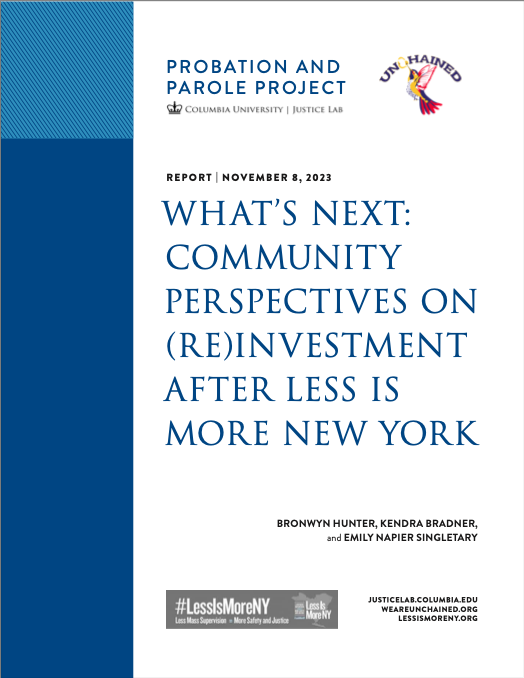What’s Next: Community Perspectives on (Re)Investment After Less Is More New York presents findings from a series of virtual town hall meetings across the state, through which community members shared insight into what resources should be invested in, and how such investments should be made. Specifically, the report identifies several areas in which that community members who participated in the town halls prioritized investments:
- housing,
- behavioral healthcare,
- employment and vocational training,
- reentry supports,
- and community spaces, among other investments.
The report also identifies a number of themes arose from the town hall discussions, relevant to how investments should be made. Community members want funds to be invested in ways that:
- enhance equity,
- target people and families who are affected by the criminal legal system,
- and build on local community and organizational capacity to meet community needs.
The Less Is More: Community Supervision Revocation Reform Act (S.1144A – Benjamin / A.5576A – Forrest) was signed into law in September of 2021. This act transformed the parole system in New York State, and has the potential to generate substantial cost savings that can be (re)invested into communities. Prior to Less Is More, spending on incarcerating people for technical parole violations amounted to over $680 million across New York State and counties. The report starts from the position that the people and communities who were the most impacted by harmful parole policies prior to Less Is More will also be experts in what can make their communities whole. The report identifies ways in which the town hall discussions echo what advocates and community members have previously called for, and also identifies opportunities for legislative action that might align with these community calls for investment.
To access the full report, CLICK HERE.
